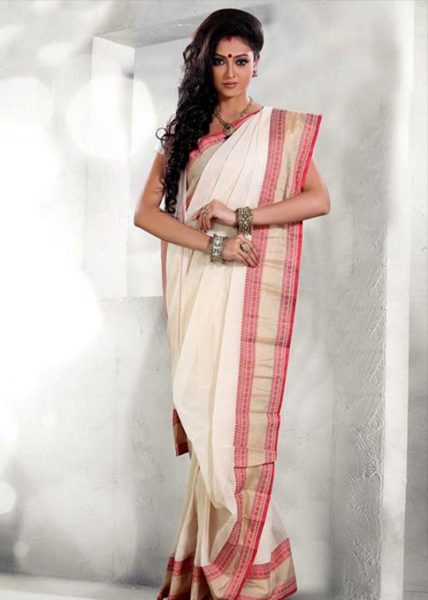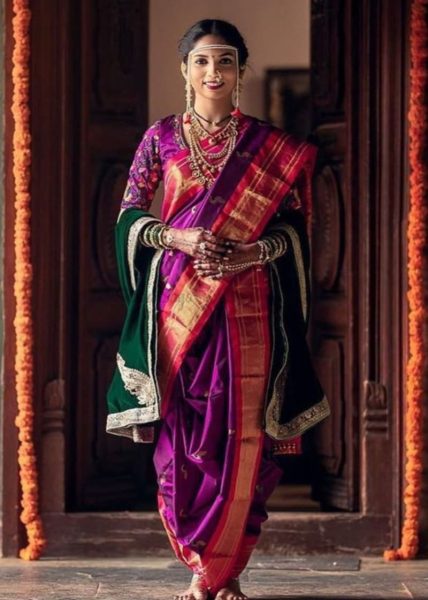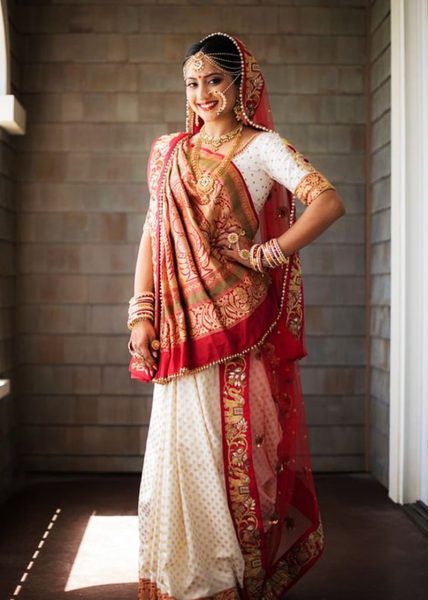Styling Guides
Nail that traditional look with these 3 Indian Saree Draping Styles and the right Jewellery
With vibrant colours, beautiful designs, and elegant draping styles, sarees are the embodiment of India’s cultural diversity. Every region has its unique saree draping style, reflecting the heritage that has been passed on to the women through generations. Whether you are going for a wedding or some other event, a saree never goes out of fashion. And don’t they look even more beautiful when paired with the perfect kind of traditional jewellery? Let’s look into three unique saree draping styles from different regions of India and traditional jewellery that would add elegance to that classic look.
Bengali style Atpoure Saree
Traditionally, Bengali Atpoure saree is white in colour with red border. This is one of the most sophisticated styles of draping a saree. The unique feature in Bengali styled draped saree is the Pallu. The box pleats appear in the front while the pallu goes on the left shoulder and comes from the back on the right shoulder. Bengali women traditionally tie a bunch of keys to the end of this pallu. The keys signify a powerful woman and reflect the honour she deserves. The saree is best coupled with a big red round Bindi. To enhance the look, you can pair it with some traditional accessories such as a Paati Haar and Chik or Choker for the neck, Jhumkas or Kaan-Balas for the ears, and Chur or Balas as Bangles on the wrist.


Marathi Nauvari Saree
Also known as Kasta Saree, this traditional saree draping style is popular in the state of Maharashtra. As the name suggests, the cloth is nine-yard long and is worn like a dhoti. In the Maratha culture, women used to partake in war, hence needed free leg movements while carrying any physical activity. One end of the saree goes between the legs to the back and is tucked around the waist. This allows swift leg movements while giving the most elegant look. The whole look is incomplete without the Chandra Kor (a crescent shape moon) Bindi and a Nath. Other traditional jewellery to pair the saree with are Maharashtrian style Bangles called Tode, Karnful or Bugadi for the ears, the Kolhapuri neckless, and an Ambada to adorn the hair bun.
Gujarati Style Seedha Pallu
Originated by the folk women in Gujarat to allow free movement, Gujarati style saree draping is similar to lehenga choli. The pallu coming from the back goes over the right shoulder and is pinned or tucked in the waist near the left arm. This style of draping a saree allows all the rich embroideries and intricate designs to be shown around the border and the veil. This type of saree goes perfectly well on everyday basis as well as in the weddings and functions. Various Gujarati style sarees such as Bandhani and Patoda are some of the most famous Gujaratis style sarees that give elegant and graceful look for any occasion. Traditional jewellery like Rani Haar (Queen’s neckless), Temple jewellery, Kundan earrings, and Bajubandh can double the grace of this saree look.

An outfit is a reflection of varied customs and cultures of a particular region. Sarees are the embodiment of India’s rich heritage. Especially coupled with the right adorable traditional jewellery, it makes a woman radiate with grace on any occasion. Sarees are here to stay for the years to come, and we are here to help you find the best ways to rock that traditional look in the best way possible.


